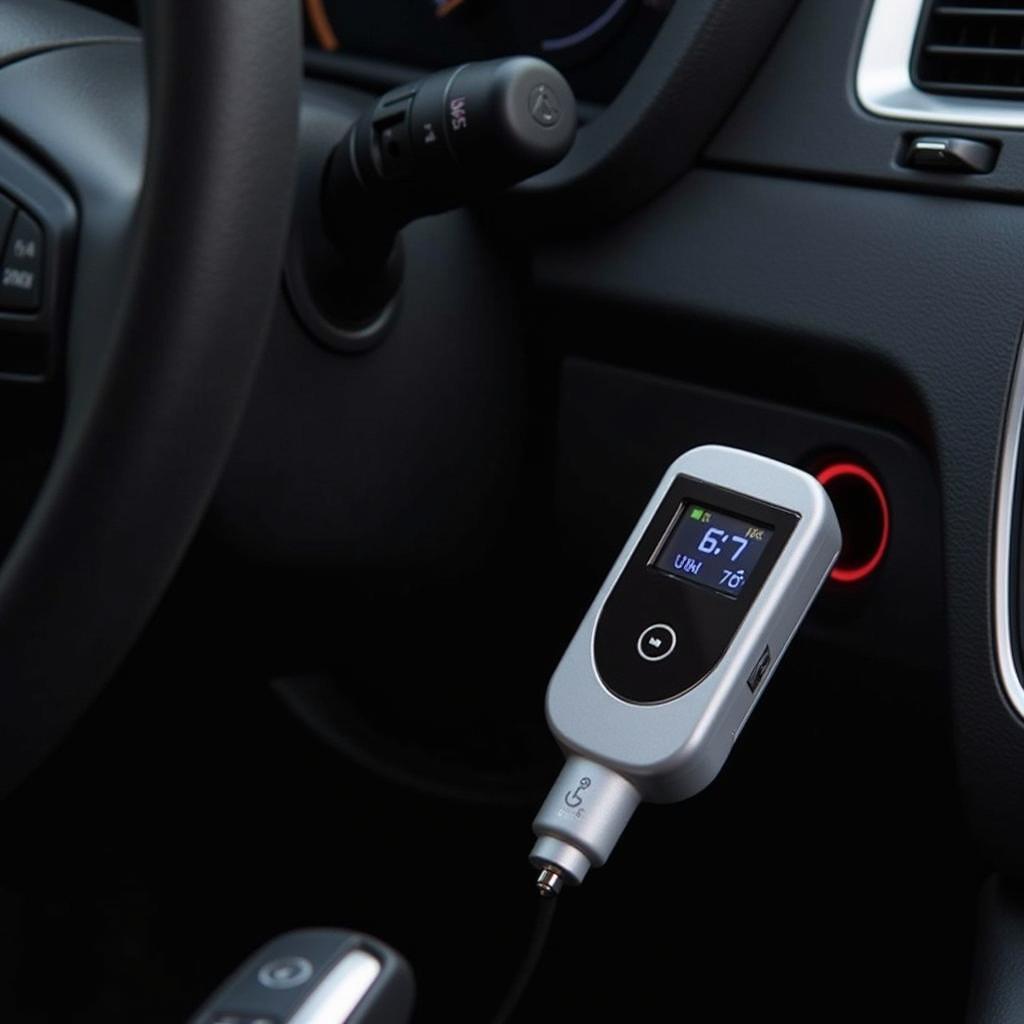Weak car battery symptoms can range from the obvious (car won’t start) to the subtle (dim headlights). Understanding these symptoms is crucial for maintaining your vehicle’s reliability and avoiding unexpected breakdowns. This guide provides a comprehensive overview of weak car battery symptoms, helping you diagnose the problem and take appropriate action.
Recognizing the signs of a failing battery can save you time, money, and frustration down the road. A proactive approach to car maintenance starts with understanding the various ways your car communicates a potential battery issue. From slow engine cranking to flickering interior lights, these symptoms often appear gradually, giving you a chance to address the problem before it leaves you stranded. Let’s explore the most common weak car battery symptoms and what they mean.
Common Weak Car Battery Symptoms: What to Look For
One of the most obvious signs of a weak car battery is difficulty starting your car. This often manifests as a slow engine crank, accompanied by a clicking sound. If your car battery is completely dead, the engine won’t crank at all. Another tell-tale sign is dim headlights, especially when the engine is idling. You might also notice flickering interior lights or malfunctioning electronic accessories.
Electrical System Issues and Weak Car Battery Symptoms
A failing battery can affect various electrical systems in your vehicle. Is the battery or alternator bad is a question often asked when experiencing these issues. Power windows may operate slowly, or the radio may lose its presets. In some cases, the car’s security system might malfunction. These issues are often intermittent initially, becoming more frequent as the battery weakens.
 Corroded Car Battery Terminals
Corroded Car Battery Terminals
If you experience any of these symptoms, it’s essential to test your car battery as soon as possible. You can use a multimeter to check the battery voltage, or you can take your car to a mechanic for a professional diagnosis.
Diagnosing a Defective Car Battery
Diagnosing a weak car battery often involves a combination of visual inspection and voltage testing. Checking for physical damage, like cracks or leaks, is the first step. Then, using a multimeter to measure the battery’s voltage can confirm its condition. A fully charged car battery should read around 12.6 volts. A reading significantly lower than this indicates a defective car battery.
“A simple voltage test can save you a lot of hassle,” advises John Smith, an automotive electrical systems specialist with over 20 years of experience. “Regularly checking your battery’s voltage is a proactive step in preventing unexpected breakdowns.”
How to Troubleshoot Weak Car Battery Symptoms
Troubleshooting weak car battery symptoms involves several steps. First, visually inspect the battery for any signs of damage or corrosion. If the battery appears physically sound, the next step is to check the battery connections. Loose or corroded cables can hinder the flow of electricity. If the connections are clean and tight, a voltage test can help determine the battery’s health.
What if the Battery is Good But the Car Won’t Start?
Sometimes, even with a good battery, the car may refuse to start. This can be due to a faulty starter motor, a blown fuse, or a problem with the ignition system. Battery good but car wont start offers detailed insights into this scenario. In these situations, it’s crucial to systematically check each component to identify the root cause.
“Don’t automatically assume a no-start condition is solely a battery issue,” cautions Maria Garcia, a seasoned auto technician. “Other components, like the starter or alternator, can also play a role.”
 Jump Starting a Car with Cables
Jump Starting a Car with Cables
What Causes a Car Battery to Weaken?
Several factors can contribute to a weakened car battery. Extreme temperatures, both hot and cold, can shorten a battery’s lifespan. Leaving lights or accessories on while the engine is off can drain the battery. Additionally, a faulty alternator can prevent the battery from charging properly.
Is My Alternator Bad or My Battery?
Distinguishing between a bad alternator and a weak battery can be challenging. Both can cause similar symptoms. Is my alternator bad or my battery helps clarify the differences between these two crucial components and provides guidance on identifying the culprit. A simple test involving disconnecting the positive battery cable while the engine is running can help determine the alternator’s functionality.
Conclusion: Addressing Weak Car Battery Symptoms
Weak car battery symptoms should never be ignored. Understanding these symptoms and taking prompt action can prevent costly repairs and inconvenient breakdowns. By regularly checking your battery’s condition and addressing any potential issues early on, you can ensure your car remains reliable and ready for the road. If you suspect your car battery is weakening, don’t hesitate to consult a qualified mechanic for car battery down not starting problems.


